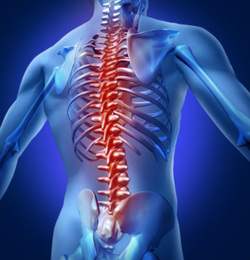|
Other Common Causes of Poor Sleep
Stress is one of the major causes of disturbed sleep, but there are many other causes. Colds or allergies which make it hard to breathe or cause post-nasal drip can interfere with our ability to fall asleep, stay asleep, or spend sufficient time in REM. Light from the sun or from electronic devices; street noise or noise from within the home (televisions, pets, family members, alarm clocks); carrying too much weight; body aches and pains; exercising too close to bedtime; watching too much television or using the computer too close to bedtime; eating too close to bedtime; having a mattress or pillow which is not comfortable to your body, drinking alcohol or caffeinated beverages within a few hours of bedtime–all of these things can cause sleep disturbance. If you have any of the following five issues more than twice per month you are suffering from clinically significant sleep disturbance: 1) Difficulty falling asleep. 2) Difficulty staying asleep all the way through the night. 3) Busy, frightening, frustrating, or otherwise stressful dreams. 4) Waking up tired and unrefreshed in the morning. 5) Excessive snoring, gasping for air, or grinding of teeth.
0 Comments
The Stress Connection
In the next post I will discuss the issue of stress in more detail. For now suffice it to say that the pressures, worries, and frustrations of our daily lives directly impact sleep. Many people even today are under the impression that sleeping is the act of inactivity. People who undergo sleep studies in which they are evaluated by video, breathing monitors, and surface electrodes all night are asked in the morning questions like, “How many dreams did you have?” and “How many times did you change your body position during the night?” The most common answer given to both questions is “none.” But the most common findings documented by video and surface electrode recordings are: 7 dreams and 30-40 changes in body position! That’s right, far from being the activity of inactivity, sleep is actually a time when we work through the things which press down upon us but which get left unresolved while we are conscious. Forgot to take care of an errand today? Had a testy exchange with a coworker? Caught your teen-ager in a little lie? Got an angry email from a client? Heard whispers that you might be up for promotion? Chances are, whether you give these things much thought or not they are going to show up in the form of dreams which represent, usually symbolically, the the worries, pressures, hopes, and fears that we feel in connection to them. Stress can prevent us from spending enough time in the deeper states of sleep or from even reaching them at all. Sometimes stress can result in bad dreams which activate the release of stress hormones, like cortisol, which cause inflammation and interfere with essential restorative processes. Have you ever dreamed that your teeth are falling out? How about being in a public place without your clothes? Or how about trying to run from something terrifying but your legs will not respond properly? These common dreams are symbolic representations of various kinds of stress: fear that something is wrong beneath the surface; anxious about being unprepared for something important; feeling trapped and/or powerless. People have, on average, seven dreams each night, but typically remember less than one each month. When our consciousness shifts to wakefulness, the content of our dreams is instantly washed away. We live in two worlds which are, for the most part, mutually exclusive of one another. This is how we can wake up in the morning with a terrible stiff neck but have no memory of the dreams during which we clenched and twisted our back, neck and jaw muscles hard enough to cause a strain injury. Stress dreams are the reason we wake up sore all over, feeling unrested, as though we had been through a battle. Tip: Keeping a pad and pen or a smartphone with dictaphone function next to the bed can help you to record your dreams; the trick is to write down or dictate them immediately upon waking up, before the conscious state sweeps them away. Dreams can be a window into our unconscious state. Many of my patients who believe that they have little or no stress are surprised by how often they have fear or frustration-based dreams. Remember the six phases of sleep which make up the 90 minute sleep cycle? It is during the last three (deepest) phases that we get our best rest. During deep sleep we inhibit the production of a hormone called ghrelin which increases appetite, while stimulating the release of a substance called leptin which turns off the desire to keep eating. Deep sleep is also the time when we replace dopamine and serotonin, two important brain chemicals which bring feelings of comfort and satisfaction. Lack of deep, restorative sleep leads to depressed mood and leaves us craving comfort foods typically high in starch, sugar, and fat. Eating to self-soothe can become an addiction and is one of the chief features of obesity. Obesity in turn can interfere with sleep by making it harder to breath while in the deepest (most fragile) phases of sleep, often knocking us out of REM to restart the cycle at phase one. Lack of REM causes us to wake feeling tired with our hormone levels unrestored and our brain circuits unrefreshed, reinforcing the cycle of depressed mood, comfort food cravings, and weight gain.
The 90 Minute Cycle
Let’s break it down. Sleep takes place in ninety minute cycles. Each ninety minute cycle is broken down into six phases. In the first phase known as latency or ‘pre-sleep,’ we are just beginning the process of going unconscious. During this phase, two neurotransmitters (adenosine and GABA) as well as a hormone called melatonin (more about this later) act to lower body temperature, slow down brain activity, and inhibit body processes associated with wakefulness. We are not yet asleep, but we are no longer fully awake. Latency is followed by Phase I sleep, the first level of unconsciousness. At this point we no longer have awareness of our surroundings–we are asleep. Each of the four successive phases represent progressively deeper levels of sleep. As we go into the deepest levels the body undergoes profound physiological changes, releasing certain hormones and neurotransmitters, inhibiting the release of others, refreshing our brain circuitry, mobilizing the armed forces of the immune system to fight viruses and bacteria which infect us each day. During deep sleep our bodies go to work repairing stressed and damaged muscle, tendon, ligament, and skin tissue, and burning fat from our waists. Paradoxically, the deepest phases of sleep are also the most fragile; they can be easily disturbed by movement, noise, light, or other stimuli. The sixth (deepest) phase of sleep, called ‘REM’, is the phase during which we dream. It is also the phase during which the most important physiological restoration takes place. We cycle down to REM sleep and then back up to phase one, light sleep, over a period of ninety minutes. As adults, in order to get full restoration of our health we must have a minimum of four of these ninety minute cycles each night, but ideally we should have five to six of them. Each successive cycle includes more time spent in REM. How Much Sleep Do I Need?
Men need about eight hours of sleep each night. Women cycle through the phases of sleep slightly faster and on average need about seven to seven and a-half hours. But these numbers vary from individual to individual. I do best at seven hours and fifty minutes, which is pretty typical for men. My wife (whom I believe to be part cat) does best with just shy of nine hours. Do We Need Less Sleep As We Age? There is a myth that as people get older they need less sleep. In fact, while it is true that people tend to get less sleep as they age, is is not true that they need less sleep. There is a tiny structure, about the size of a small pea, which lies in the center of the brain, just behind the eyes. It is called the pineal gland and it produces a serotonin-based hormone called melatonin which helps to induce and maintain the sleep state. The pineal gland is the only endocrine gland that has communication with the outside world. It senses light through activation of receptors behind the eyes. In the absence of light, these receptors are quiet, and the pineal gland secretes melatonin which makes us sleepy and helps us to cycle down into deeper sleep. In the presence of light, the receptors become stimulated (even when the eyes are closed) causing them to signal the pineal gland to stop producing melatonin and initiating a reflex to induce wakefulness. The production of sleep-inducing melatonin in the dark and the shutting off of melatonin production in the presence of light, ties us to the cycles of day and night. The pineal gland is the control center of our circadian rhythm. The pineal glands of babies produce a lot of melatonin. A little less gets produced during childhood, but it is still a lot compared to the precipitous decline which takes place during adulthood. By the time we reach the age of 50, our pineal glands are able to produce only about 25% the amount of melatonin that we produced in our teen years. By age 70 we produce only 5-10%. High levels of melatonin production in infancy and childhood help to explain why children are able to drop suddenly into such deep sleep and to maintain sleep for nine, ten, or more hours. Similarly, progressively lower levels of melatonin helps account for the difficulty many people experience getting adequate sleep as they get older. But this does not mean that our bodies need less sleep as we age. It is more accurate to say that the aging process–the breakdown of healthy body tissues due to increased inflammation and diminished circulation–is exacerbated by lack of sleep, a problem which tends to accelerate as we age due in part to diminishing levels of melatonin. I Get Enough Sleep, So Why Do I Still Feel Tired? The right quantity of sleep is important for necessary restoration and recuperation. But equally important is the quality of the sleep that we get. Many of my patients report sleeping 7-8 hours per night, but they still wake up feeling tired and unrefreshed a clinically significant amount of the time (more than twice per month). Do you need coffee to get you going most mornings? Is it the rare morning when you wake up full of energy, feeling as though you’d slept just the right amount in order to feel great? If you are waking up feeling tired despite getting plenty of sleep, then you are probably experiencing poor quality sleep. REM, the deepest phase of sleep, is also the most fragile phase and is very susceptible to disruption. Noise, light, difficulty breathing due to excess fat in the throat area (sleep apnea), back pain, neck pain, shoulder pain, even the pressure of a full bladder can be enough to nudge us out of this most important phase, either waking us up, or almost waking us and causing the cycle to restart at pre-sleep or phase I without having spent any or enough time in REM restoring our bodies and brains. This is how we are able to get eight or more hours of sleep yet still wake up feeling tired and unrefreshed. We are simply not spending enough time during those eight hours in the deep restorative phases of sleep, especially REM.  If we want to retire with enough savings to live comfortably then we need to have a strategy. We must put our strategy into place many years ahead of time and then stick to it until retirement. If we want to get into a good college, grow our business, become a success at virtually anything, we need to create the habits and behaviors which will move us gradually toward our goal. Health is no different. The AIL strategy starts by understanding that optimal health (within the limits of each of our genetic capability) is dependent upon five behaviors which must become incorporated into our daily lives as habits. These five behaviors, which I call the Five PIllars of Health, are as follows: 1) Proper nutrition 2) Specific supplementation 3) Regular exercise 4) Restorative sleep 5) Stress management All is not just a strategy for longevity, it reflects my deeply held conviction that the quality of one’s life is as important as longevity itself. In this essay I will discuss the most overlooked pillar of health: sleep. Sleep: The Most Commonly Overlooked Pillar of Health Until the middle of the last century relatively little was known about sleep. Generally considered to be the time when we ‘recharge our batteries,’ few doctors and even fewer lay-persons have sufficient understanding of what sleep is and the essential role that it plays in our health and well-being. Immune function, brain function, tissue healing, regulation of body fat, hunger, and mood are all dependent upon sleep–deep, restorative sleep. Yet up to 70% of adults do not get enough of this vital restoration to move them in the right direction along the Health Continuum (see previous blog posts for more on the concept of the Health Continuum). Only recently have issues like sleep apnea and restless leg syndrome become part of the general health conversation between doctors and patients, and these conditions form just the tip of a giant iceberg which includes diminished sex drive, low levels of testosterone, obesity, compulsive eating, depression and anxiety, chronic infections, and generalized inflammation–the underlying cause of most chronic diseases–all of which can be linked directly to lack of restorative sleep.  I tried physical therapy/chiropractic and it didn’t help. Should I see a surgeon? No two doctors or therapists are the same, but there is more variation between chiropractic doctors than in any other specialty. Part of the reason is because not all chiropractors receive the same training. Most chiropractors in the United States focus primarily or exclusively on spinal manipulation as their mode of therapy for any and all cases they see. Regardless of medical diagnosis, these chiropractors limit their attention to what they term subluxations or ‘spinal misalignments’ which they believe to be the cause of virtually all problems. Physical therapists, by contrast, are not trained in and are not legally permitted to perform spinal manipulation treatments. For most physical therapists, patient assessment is approached from the standpoint of strength, flexibility, and postural evaluation. Pain, they believe, is the result of weakness, lack of mobility, and poor posture. Exercises and stretches to improve strength, posture, and mobility are the primary or exclusive therapeutic modalities. While good posture and improved strength and mobility are good things, they will not bring about the resolution of many physical ailments including pinched nerves caused by herniated discs. Nor will spinal manipulation by itself permanently re-align the spine to decompress a pinched nerve. Proper conservative care must include strengthening, nerve stretching, traction, manipulation, and management of inflammation. Each part of the treatment addresses a different but essential component of the problem. If you have had P.T. or chiropractic treatment but have not been given core strengthening exercises which dramatically push you to improve strength in the lower back, buttocks, and abdomen, or have not been given nerve stretches to be done regularly throughout the day, or have not undergone traction treatments, decompression exercises, or anti-inflammation therapy, then you have not yet undergone a comprehensive course of conservative management and should not seek surgery yet. On the other hand, if you have undergone comprehensive conservative management for up to 8 weeks without significant improvement in your symptoms (at least 75% recovery), it is time, in my opinion, to seek a surgical consultation. My answer contains a bias. All clinicians see other clinicians failures and, inversely, we do not see their successes since patients who are cured have no need to seek another provider’s care. As such I have seen many patients who have received insufficient help from spinal surgeries, as well as a significant number of patients who were made worse by them. Some studies have concluded that patients are more likely to recover from symptomatic lumbar (lower back) disc herniations if they seek no form of care whatsoever than if they undergo back surgery. Surgery is risky, expensive, and requires significant recuperation time, including lost time from work and often lengthy and painful rehabilitation. From my perspective, for these reasons surgery should be considered only for patients for whom the diagnosis suggests a favorable response, and even then, only as a last resort option. Neck and back pain, in my experience, rarely are helped by spinal surgery, whereas radiculopathies (pinched nerves) are almost always helped (to some degree) by the right kind of surgical intervention. Conservative treatment such as traction, chiropractic manipulation, core strengthening, nerve stretching, and special exercises designed to decompress the pinched nerve(s) is usually successful, especially when combined with anti-inflammatory medicine, such as prednisone. The course of care should be relatively short (typically 4-8 weeks) to return patients to being fully functional and pain-free. If after a 1-2 month course of care a patient is not significantly improved (at least 75% better), the prognosis for conservative management becomes poor and, depending on the particular needs, symptoms, and health of the patient, it is at this point that I recommend the surgical option be considered. If disc herniations don’t cause pain, why do people get treatment for them? Herniated Disks Part 26/16/2014 Disc herniations can cause pain, numbness, and weakness. Nerve roots emerge from the spinal cord and exit the spine through the openings between the discs and the joints, one on the left and one on the right, at every spinal level. When nuclear material extrudes through the annulus into the lateral recesses, it can come into contact with one or more of the nerve roots, compressing or simply irritating them. Nerve root compression or irritation is called radiculopathy, or what is often referred to as a ‘pinched nerve.’ Nerves which emerge from the neck run down the arms to the hands and fingers; nerves which emerge from the lower back run down the legs to the feet and toes. Each nerve carries electrical impulses down to stimulate muscles to contract, and also carries impulses back from the skin and body tissues which is how we perceive sensation. Each different nerve supplies its own specific set of muscles and its own specific patch of skin, and these are quite consistent from person to person. For example, radiculopathy of the C-6 nerve, caused by a herniated disc at C5/6, can cause pain and/or numbness and/or tingling in the upper back, shoulder, arm, hand, thumb and first finger; it can also cause weakness in the muscles which bend the elbow (biceps) and pull the wrist backward (wrist extensors). On the other hand, a herniated disc at C5/6, in which the extruded nuclear material does not compress or irritate a nerve may very likely cause no symptoms whatsoever, and most people have experienced at least one such disc herniation somewhere in their spine over the course of their lifetime without knowing it.  HERNIATED DISCS A common problem seen in chiropractic practice is pain, numbness, and/or weakness associated with a herniated disc. Though less commonly a cause of back or neck pain, herniated discs are among the most common causes of symptoms in the upper and lower extremities. Basic Anatomy The spine starts at the base of the skull and extends downward ending at the tailbone. It is comprised of 24 individual bones, called vertebrae. Each vertebra is separated from the ones above and below it by shock-absorbing structures called an intervertebral discs, or simply discs. Discs are made up of a tough, fibrous, outer shell (called the annulus) and a soft pulpy inner material (called the nucleus). In its normal, healthy state, the nucleus resides within the annulus like jelly inside of a doughnut. The discs help to absorb the shocks of jumping and running as well as the sustained weight-bearing loads born by the spine as a result of gravity. Approximately two thirds of our weight is supported by the discs, while one third is supported by the joints of the spine which sit behind the discs. Without the discs, all the weight of our bodies and the shock forces we experience during activities would be born by the joints of the spine alone, causing them to wear down quite quickly. Disc Herniation Herniated discs are very common findings seen on MRI or CT imaging. Herniated discs cannot be seen on X-rays. Herniation describes the abnormal protrusion of body material from an enclosed cavity. In the case of a disc herniation, the nucleus protrudes through the annulus, like jelly squeezing out of a doughnut. Weakened muscles of the ‘core’ in the lower back, abdomen, and buttocks lead to excessive weight bearing by the spine. This in turn places extra strain on the shock and weight absorbing discs. These excessive forces lead gradually over time to small tears in the tough, fibrous annulus. As these tears take place over time the areas containing tiny tears become structurally weakened, often leading to larger tears and extension of the damaged area to create a visible rent or defect in the annulus. When the tears are large enough, the gelatinous nuclear material migrates outward from the center to fill the rent, causing the disc to bulge. Disc bulges get bigger as the tearing continues over time until finally, the annulus tears open completely (ruptures), creating an opening large enough to allow some of the nuclear material to protrude from the disc out into what is called the spinal canal and/or the lateral recesses. At this point, we refer to the process as a disc protrusion or a herniated disc. Perhaps the most important thing to understand right from the start is that annular tearing, disc bulges, and even disc protrusions/herniations are not necessarily painful events. Discs themselves have generally poor nerve supply and in many patients disc injuries are not associated with any pain. It is rare that chronic back or neck pain comes from a herniated disc. That is not to say that disc herniations cannot cause pain into an extremity (arm or leg), or that the swelling and inflammation associated with large, sudden disc herniations cannot cause acute pain in the back or neck. But approximately 50% of all adults who have never experienced significant pain in the neck or back have disc herniations on MRI evaluation. This means that somewhere along the way, the progression of tearing, bulging and ultimately herniation took place with no symptoms whatsoever. So common is the finding of a herniated disc, that clinicians skilled in treating neck and back pain must have much more evidence than simply the finding of a disc protrusion on a CT or MRI scan before making a diagnosis. A finding is something that is abnormal on an examination. A diagnosis is a disease or disorder. When a finding is the cause of a condition, it is sometimes used as a diagnosis. However, in the case of disc herniation, the finding is often not the cause of the problem. If your condition has been attributed to a herniated, degenerated, or bulging disc, you should be sure that your clinician has been careful to match your findings to your symptoms and to rule out all the other more common causes for your problem. |
AuthorArchives
August 2021
Categories
All
|


 RSS Feed
RSS Feed